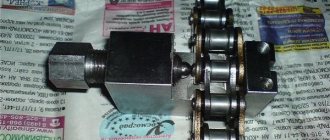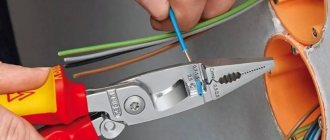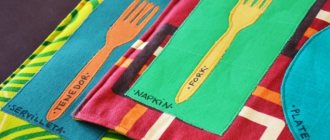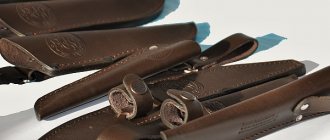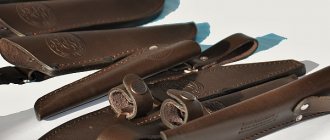How to make a clamshell with your own hands: step-by-step instructions, video
Each type of crayfish trap is made using a different method, which has its own characteristics. In addition, to create a device it is necessary in each case to prepare certain tools and materials.
Crack grip made from plastic bottles
A bottle made from plastic bottles is considered an uncomplicated and fairly simple device, the manufacture of which does not require special knowledge and skills.
To make a crayfish trap, you need to prepare:
- Plastic bottles, it is better to take 5 liters;
- Soft metal wire or thick fishing line;
- Rope;
- Cargo;
- Awl;
- Knife and scissors.
The shell is made according to the following scheme:
Cut off the part at the top with the neck of the plastic bottle. Cut the neck so that the crayfish can fit completely into the resulting hole. Insert the top with the tapered end into the bottom of the bottle; it is important to make the design in such a way that it is easy for the crayfish to get into the device, but impossible to crawl back out. Connect the parts of the bottle using flexible wire or fishing line, and first make holes with an awl. To release air from the structure, it is necessary to make a large hole in the main part. Attach a weight to the bottom of the bottle so that it does not float to the surface of the reservoir. Make a small loop from the inside at the bottom so that the bait can be attached to it. Wrap the place where the parts are joined with rope.
Note! On the pond you need to disconnect the parts rewound with rope, attach the bait, and tie them again. Holding the rope, throw the structure to the chosen place, and secure the rope itself with a peg on the shore.
Conical or round made of nylon mesh
To build a trap in the form of a cone or circle, you need to prepare:
- A mesh with small cells;
- Metal wire, its diameter should be 0.5 cm;
- Nylon threads;
- Plastic clamps.
The shell is made according to the following scheme:
- Two rings are made from wire, the first should be 50 cm in diameter, the second 20 cm.
- Attach the mesh to a ring of larger diameter using clamps or nylon thread, while fixing the mesh should be every 50 mm.
- Make 3 spacers from the mesh, their length is 15 cm.
- Place the spacers at the same distance from each other; for convenience, one spacer can be made removable.
- Stretch the mesh to a ring of smaller diameter, fix it on it every 10-15 mm.
- Using scissors or a knife, remove excess mesh from the structure.
Note! For ease of use, you can tie a rope to the smaller ring, which will make it easier to lift the structure from the bottom of the reservoir.
In the form of a metal mesh cage
To catch crayfish, it is better to use a boat without wings, but with a double entrance. To make a structure in the form of a top you will need:
- Metal mesh with small cells;
- Knitting wire;
- Wire ties;
- Rope.
The design is simple and quick to make:
- Cut a piece from the mesh; its width should be at least a meter and its length up to 2.5 m.
- Roll the piece into a cylinder, its diameter should be approximately 30 cm.
- Tie the edges of the mesh strip using binding wire; you can also use welding.
- Make 2 conical entrances from the mesh.
- Attach the narrow part of the inlets to the base of the cylinder using wire.
- Connect the narrow ends of the entrance inside the trap with wire ties.
- Tie ropes to the ends of the structure.
Let's celebrate! The bait is placed in the hole, then the structure is lowered or brought into the reservoir. There is no need to attach a load to the device, since the metal mesh holds well at the bottom.
Versha
To build crab traps with your own hands (photo of this trap below), the home craftsman will need metal fine mesh and wire. The first step is to cut one strip of mesh. One meter will be enough. Of course, its length can be one and a half or two meters, or even more, but it will be difficult to throw such a structure.
How to make a crab trap in the form of a top with your own hands? This process consists of several stages. First of all, the finished strip is rolled into a cylinder. It is desirable that the diameter of its base be at least 300 mm. Next, using a knitting wire, you need to connect the edges of the strip to each other. Welding can also be used for this purpose. Then it is necessary to form two conical entrances to the trap. They should be installed so that their narrow ends point inward. The cones are attached to the crab trap using binding wire. And they connect with each other in the same way. A rope is tied to the end of the structure, with the help of which this product will be removed from the water. A trap made from a plastic bottle is considered quite catchy.
Creation of a metal shed
The process for creating a more complex crayfish trap is as follows:
- The roll of metal mesh must be unwound on a flat surface and a piece 80 cm long must be cut (the resulting canvas is 100 x 80 cm).
- The resulting cut must be rolled into a cylinder so that the larger side is the height of the cylinder. The ends of the mesh are fastened to each other using wire.
- Next, you need to measure the diameter of the resulting cylinder (it should be approximately 25 cm).
- From the remaining part of the metal mesh, it is necessary to cut a semicircle with a radius of 25 cm. Next, a segment 5 cm long is laid off from the base of the radius, a circle is built (with a radius of 5 cm) and cut out with metal scissors.
- The resulting workpiece must be rolled in such a way as to form a truncated cone. We fasten the edges of the mesh with wire. The resulting cone is inserted into the cylinder (with its apex facing inward) and secured with wire.
- A similar truncated cone must be attached to the other side of the cylinder.
- Next, you need to make a hole in the future crayfish trap through which it will be convenient to put bait and get crayfish. To do this, approximately in the center of the cylinder you need to mark a small rectangle (15 x 20 cm) and cut it on three sides. After the bait is placed in the trap, the resulting “door” is fixed on the cut sides with wire.
- Now you should tie a strong thread or rope to the edges of the cylinder - and the crayfish trap is ready.
Now all that's left to do is pick the right bait (crayfish love the smell of rotten meat), go to a pond with clean running water and set a trap somewhere near a rocky or clayey shore. Great catch guaranteed!
Rakolovka from a bottle
This trap is very easy to make. You will need a regular large plastic bottle (for example, 6 liters). If this is not available, you can use more common containers of 2-3 liters.
- First you need to cut off the neck at the place where the bottle begins to narrow. So that large crayfish can get into the trap, it is better to cut off the plastic rim at the neck.
- Then we make small holes in the main part, which will allow the air to escape faster and ensure that the crayfish sinks quickly to the bottom of the reservoir.
- We insert the cut neck into the bottle with the reverse side and secure it with fishing line.
- We make a couple of holes in the bottom of the bottle through which we insert a wire to secure the bait.
- At the final stage, we make another hole and insert a rope through it, which will allow you to conveniently remove the crayfish trap.
Fishing with a crayfish
Open type of shells
Raklovki, or otherwise crayfish or racheshni, are quite convenient and catchy fishing gear. They are inexpensive, and if necessary, you can make them yourself. These gears may have different designs. For the simplest one you will need some mesh, wire and wood. The easiest to make is the so-called crayfish - a grip very similar in appearance to a plate. It can be made from wire or a regular wooden circle. If the crayfish is round, then its optimal dimensions are from fifty to seventy centimeters. You need to stretch the net over this circle so that it can sag in the center.
Open type shells
If you need a crayfish trap for deep fishing, then you need to tie 3 or 4 ropes to it and connect them with a knot to which a rope is tied, with the help of which the tackle will rise and fall. A float is attached to the end of foam or other material. This gear is suitable and crayfish can also be caught in it in winter.
For fishing in the shallows, another tackle is better suited; its difference from the one described above is that the float needs to be replaced with a pole, which will need to be stuck into the ground during fishing. The bait must be tied to a pole or directly to the center of the net.
A rack has a similar design, which consists of a circle (wire or wooden), a cone-shaped bag in it with a sinker fixed in the center. Typically, such tackle is baited with ordinary worms (preferably dung), they are strung on a thin wire and attached to a circle. This type of clamshell is lowered and raised using a rope.
Catching crayfish using crayfish traps is a very easy task, but you need to know that if you lift such gear slowly or it tilts, the crayfish will have time to scatter. Therefore, it rises quickly and sharply. It is better to fish with crayfish from a boat. Just immerse it in the place where the crayfish may be. Gear is checked approximately every twenty minutes. This crayfish catcher can be used almost the whole year, and even catching crayfish in the fall using this gear will be successful. The only thing is that the bait for crayfish should be different, and we will tell you which one later.
Closed shells
Closed crayfish traps are very catchy and are sometimes called night or crayfish houses. Fishing with them is much more convenient, but they are more difficult to manufacture than open ones. They are often made so that they can be folded. The main advantage of such crayfish traps is that they do not need to be constantly checked. You need to remove them and check them no more than two or three times during the night, or you can even leave them until dawn.
The simplest closed shells
There are many designs of night crayfish traps. The simplest ones are made from a wire frame (the sizes may vary, but we recommend the following: the diameter of the lower circle is forty to fifty centimeters, the upper circle is twenty-five to thirty-five centimeters, the height is 15 centimeters). You need to stretch the net over the frame so that there remains a hole with a diameter of about six centimeters. Sometimes closed racks are made higher, up to twenty-five centimeters; at the entrance, depending on the design, one or more necks are made of wood. The entrance hole must have a diameter of at least five centimeters. They are secured with guy ropes to the bottom circle. Tackle with several necks is more catchy. And if you have chosen this one, then you should know that it is better to place them obliquely. This will significantly increase catchability.
New clamshells
Specialty stores currently have a large selection of new products for crayfish hunting. This is a spider shell, a stocking, an inkwell. One of the new products is a 3-meter-long ranch house with 12 entrances.
It is made of thin nylon, which allows the crayfish to move freely towards the bait without clinging anywhere with its claws.
It is attached to the bottom of the ground with pegs, looks like a caterpillar, and has 6 crayfish entries at each end. Stretches well, check once a day.
Before you go hunting for crayfish, it is worth asking whether crayfish fishing is prohibited in a nearby body of water. Many water resources prohibit fishing at certain times of the year. Ignoring the ban is fraught with a large fine.
What should be the bait for crayfish?
Before you go catching crayfish, you need to find out more about what smell the bait should have, since it is this that is the key to a big catch.
Oddly enough, in addition to rotten meat, crayfish willingly eat rye bread with garlic.
Unpeeled garlic is first crushed and pressed into the crumb, and to prevent the bait from becoming soggy longer, it is placed in a nylon stocking.
Video:
You can also grind the bread with garlic in a meat grinder, and distribute the resulting mixture in portions into gauze bags.
Crayfish have an unusually strong sense of smell, and they also love the smell of garlic too much, so you can add more of it.
Some crayfishers deny the information that bait in the form of rotten meat or fish is the most effective. On the contrary, it is good to catch crayfish using fresh food, pre-cut into pieces.
For some reason, cancer is reluctant to eat the meat of predatory fish - pike and perch. The fish is cut along the ridge in advance, and the meat is turned inside out to enhance the smell.
According to crayfish experts, crayfish found in separate bodies of water have their own diet. Therefore, their preference for different baits is determined by the trial method.
To do this, the crayfish traps, in which baits of different types are placed, are placed at intervals of 15-20 m from each other. After this, it becomes clear what food is best to catch arthropods with.
Video:
Using the same sampling method, it was found out what food attracts crayfish at different times of the year.
In spring, fish caught by hand or purchased frozen are used as bait. These can be gobies, roaches, crucian carp.
Summer bait can be animal meat. During hot periods, crayfish will readily feast on the stomach, part of the head or liver. Such bait can be purchased at the market and cut into pieces.
In the fall, when the cold weather sets in, bread with garlic is placed in the clamshell.
Lures for catching crayfish
Whatever the design, the same type of bait is always used. To attract crayfish into the trap, the following baits are used: cut fish, fresh fish, chicken or rabbit offal, domestic animal liver, bread with garlic or dill.
It is recommended to install a crayfish trap near steep, washed-out banks. It is better that this is a place with a clay bottom, or bordered by stones. It is in such soils that crayfish make burrows.
The most convenient way to install a trap from a boat is to tie a fishing line or rope with one end to the trap and the other to a piece of foam plastic. This way the location of the crayfish will be visible, and it can be quickly removed from the water.
Cloudflare Ray ID: 63a7f07869421695 • Your IP: 195.64.208.251 • Performance & security by Cloudflare
Cloudflare Ray ID: 63a7f0793ab4f152 • Your IP: 195.64.208.251 • Performance & security by Cloudflare
Photo of crayfish and tench
How to make a clamshell from a bottle?
There are situations when, while relaxing near a river or other body of water, you suddenly remember that there are no special devices at hand for catching crayfish. What to do in this case? Ordinary waste material will come to the rescue. So, how to make a clamshell with your own hands from a bottle? For such a treatment you will need:
- two plastic bottles of the same diameter;
- knife or scissors;
- an awl (or any other sharp tool at hand) for piercing holes;
- wire;
- strong thread or rope.
A bottle shell is made as follows:
- Using a knife or scissors, the first bottle is cut into two parts (the cut is made just above the middle of the bottle).
- The second bottle is also cut into two parts, but the cut is made a couple of centimeters higher than the first.
- Now the smaller cut neck of the bottle, after removing the cap from it, must be inserted into the larger neck.
- Using a hot awl (or some other improvised object), you need to make five holes along the contour of the resulting workpiece.
- Next, another row of punctures is made, slightly higher than the previous holes.
- A wire is pulled through the resulting holes so that both necks of the bottles are securely fastened to each other.
- It is also necessary to make two pairs of punctures on different sides of the resulting workpiece in order to attach weights to the bottle.
- Now it is enough to tie a strong thread to the outer neck of the bottle to throw the rachevna into the reservoir - and it’s done!
Such a simple crayfish trap, the photo of which is presented below, can easily accommodate a couple of small crustaceans.
Examples of homemade shells
Before you make a crayfish trap with your own hands, you should familiarize yourself with several samples. They are made from different materials, so everyone can choose a model to their liking.
PET bottle trap
The lightest and most cost-effective trap can be made from two five-liter bottles.
- Using a knife, remove the neck and bottom of each bottle to create plastic cylinders.
Polyethylene will be easier to cut if the knife blade is slightly heated in a fire.
To the fisherman:
Catching crayfish is a fun and interesting activity. Every self-respecting fisherman has tried to hunt crayfish at least once. With a successful hunt, you can haul a bucket of crayfish in a couple of hours.
Hunting for crayfish is always successful, interesting and exciting. Moreover, there is no need to purchase expensive equipment.
Crayfish are found only in unpolluted water. They are an indicator of an ecologically clean reservoir and they do not survive in polluted water.
There are several types of crayfish fishing:
- Hands;
- Fishing rod;
- Rakolovka;
- Plastic bottle;
- Ostrogoy;
- With a stick.
It won’t be very difficult to make a ranch; for this you need to have available materials. The most primitive model consists of steel hoops, iron or nylon fine mesh, thin copper wire, and plastic clamps.
In addition to metal hoops, wooden circles are also used; willow or bird cherry are suitable. Wooden circles do not withstand prolonged contact with water.
Therefore, they need to be painted, preferably a dark color. The rings are located at the same distance, but their sizes are different.
This is done so that the caught cancer cannot crawl back. This is the design feature.
Step-by-step production of a cone rack:
- In the same way as the base, we make the neck.
Only the neck diameter is smaller, 250-300 mm. - We connect the ends and try to wrap them tightly with copper wire.
Notches and folds hold the splice ends under the copper winding. - We bend a steel ring with a diameter of 400-500 mm.
This will be the base of the shell. We make bends at the ends of the wire, and make notches at a distance of 15-20 mm. - The length of the spacers should be 180-200 mm when assembled
, their number should be at least three. Using pliers, we make an eyelet at one end of the spacer and connect it to a large ring, which serves as the base of the shell. - This is how we accurately connect the other end of the neck.
- We place the base in the center of the mesh and sew it together with copper wire or clamps.
We carry out this work around the entire circumference. We also sew the mesh to the neck, having previously stretched it. We cut off the rest of the mesh. - We tie a small weight to the bottom so that it does not get carried away by the current.
Don't forget to put bait at the bottom of the crayfish trap. - We tie a strong rope of suitable length to the neck,
using which we will pull out a generous catch. The rope must match the depth of the lake or reservoir.
Beginners can complete this work in 1.5 hours, while for professionals it will take no more than 40 minutes. It is worth noting that hand-made racks are more convenient and durable than store-bought ones. The clamshell is installed in the pond overnight.
The most delicious crayfish is 10-12cm long. But to reach such a size, it must live 3-4 years. Therefore, release small crayfish with caviar.
Rakolovki are divided into two types:
- Open,
- Closed.
The simplest and most primitive open type rack. In common parlance it is called a plate or a grip. A wire or wooden circle 50-70 cm in diameter is wrapped around the delta so that it sags in the middle.
Screen
Screens are called lift-type traps with a mesh stretched over a metal frame. They are also easy to make at home. For this we need:
- strong elastic steel wire with a diameter of 4-6 millimeters;
- mesh with small cells;
- cord.
To make a shell out of this, you need to do the following:
- We bend the wire into a circle with a diameter of about fifty centimeters. For this we need a piece 1.5-1.6 meters long.
- We weld the ends of the wire or tie them with binding wire.
- We stretch the net over the resulting hoop. The tension should not be tight so that the net sags a little in the center.
- We tie four laces of equal length to the hoop, the segments should be approximately 40-50 centimeters.
- We tie the second ends of the laces together.
- We attach a rope to a common knot.
At the pond we tie the rope to a long, strong pole. We place a weight in the middle of the screen and tie a bait placed in a bag made of rare fabric. It could be:
- tulle;
- gauze;
- Women's tights, maybe not new.
We lower the crayfish trap into the water and wait for the crayfish. This trap needs to be checked every 20-30 minutes. We pull out the crayfish vertically, while the weight helps to pull the bottom, preventing the prey from quickly leaving the crayfish.
What is a squeegee
So, a squeegee is a specialized tool designed specifically for leveling the fill. Outwardly, it resembles a wide spatula with a long handle.
Construction stores offer a large selection of this tool with different blade lengths, different widths, and the presence or absence of a height adjuster, so it is not easy for a beginner to make his choice. Squeegee with metal attachment for long handle
Shell made from construction mesh
Another option for making a shell is from construction mesh. The layout of this shell is identical to the previous one. Only it will have a larger volume. We will need a metal mesh with a 1 cm mesh. You can use it with a smaller mesh, but its price will be more expensive.
From tools and materials we will need:
- Metal scissors
- Roulette
- Marker
- Pliers
- Nylon rope
- Metal wire
The width of the mesh is 1 meter, length 80 cm. We cut a piece of mesh to the required length and twist it into a cylinder:
Before this operation, it is necessary to file the edges in the places where they were cut with metal scissors. Otherwise you may cut yourself.
The next stage is to close the ends of the cylinder and connect them first with the tips of the wire that were formed after cutting off part of the mesh with scissors. We connect the cylinder at both ends:
It should look something like this:
The next step is to take the wire and cut off pieces 4-5 cm long. Next, we thread it through the junction of the ends and twist the wire with pliers to get a reliable connection:
We make such twists along the entire length of our future shell in increments of 8-10 cm.
Having completed this operation, measure the diameter of the circle at one of the ends. Naturally, the sizes of the circles must match. In our case it turned out to be 25 cm.
Next we perform the following operations. We take the remaining mesh and lay it on the ground. Next, measure 25 cm from one end.
After this, draw a semicircle using a tape measure. Next, take metal scissors and carefully cut out a semicircle.
Mark the middle with a marker:
We measure 5 cm from the middle and draw another small semicircle. This will create a cell through which the crayfish will crawl into the trap.
Then we cut this small semicircle along the kennel and get this blank:
After that, we make this cut cone out of it:
We insert the resulting workpiece into one end of the cylinder.
We make sure that we have correctly calculated the dimensions of the shell. We make the same cone for the second end of the shell. After this, carefully thread the wire around the entire circumference and, as it were, stitch two figures. As a result, we should have the following design:
To cast over a long distance, we tie a nylon rope to the crayfish catcher. If it is not there, then you can tie the wire that is used in the wiring. We place rotten meat or fish inside it. For stability, do not forget to place a weight in the middle. Stones of suitable diameter will do. To easily remove the loads, it is better to make a small window on the side of the trap, cutting it with metal scissors. You can fasten it at two points with wire.
Good fishing online stores
will allow you to purchase any fishing goods at competitive prices!
Subscribe to us - through them we publish a lot of interesting information, photos and videos.
Popular sections of the site:
The fisherman's calendar will allow you to understand how all the fish bite depending on the time of year and month.
The fishing gear page will tell you about many popular gear and devices for fishing.
Fishing baits - we describe in detail live, plant, artificial and unusual ones.
In the bait article you will get acquainted with the main types, as well as tactics for using them.
Learn all the fishing lures to become a real fisherman and learn how to choose the right one.
Getting to know the device
Before you start making crab traps with your own hands, you should understand what this design is. Mostly such devices consist of a rigid frame with a stretched mesh or other barrier material. Be sure to have bait of organic origin. Often, catchers fill their devices with meat or fish. Depending on the type of structure, there are open and closed. You can make your own crab traps in the form of a screen, a tip and an inkwell.
Making a clamshell with your own hands
Catching crayfish is not difficult. It is enough to have even one crayfish trap, which is easy to make with your own hands. The lightest and most frequently used crayfish catcher is a ring with a diameter of about 45 centimeters made of wire, which is covered with mesh. The disadvantage of this system is the need to check every half hour, since the crayfish, having eaten the bait, can simply run away.
We suggest you make a more convenient crayfish trap, once in which the crayfish will no longer be able to get out of it.
Manufacturing:
First we need to make a couple of metal rings. The diameter of the lower one is about 45 centimeters, the diameter of the upper one is about 17 centimeters.
We attach the mesh to the ring using plastic clamps approximately every 6 centimeters. If you cannot find plastic clamps, then nylon thread may also be suitable for fastening.
We make three spacers from thinner wire; electrodes with a diameter of 3 millimeters are well suited for these purposes. The spacers must be made the same length and so that the ring with a smaller diameter is in the center at approximately a height of 15 centimeters.
If you want to make a folding shell, then make one of the 3 spacers removable. The remaining 2 are attached to rings.
Once the spacers are in place, tighten the sides of the frame. Next, you need to grab them using clamps to the upper ring.
We fix the clamps on the upper ring every 12 millimeters. We cut off the extra pieces and our soup is ready! Now you can go to a pond and try it out by installing it in a place where crayfish can be found. Do not forget that the bait must be tied.
Round clamshell
Consists of two identical rings, with a diameter of 40 to 50 cm. The distance between the rings is 17 cm.
A rope is attached to the upper ring on both sides to lift the crayfish from the bottom, and a weight is tied to the lower ring.
If you install several traps at a certain place around the perimeter, the catch of crayfish will increase significantly. This is an open model.
Closed round shells are made with several entrances. The mesh is pulled over the body, which is springy. Their length reaches a meter, and the number of inputs can be from 3 to 6.
They are made in the form of an umbrella, an arc, or a spring. A weight is attached to the bottom of the crayfish trap along its entire length to prevent it from being carried away by the current. It is designed for catching crayfish from a boat and from the shore.
How to catch crayfish correctly?
In order to get a good catch of crayfish, you need to use the recommendations for catching them, since not in every place of the reservoir it is possible to catch prey in large quantities.
Search for a place
To choose the right place, it is better to use the following recommendations:
- Crayfish love clean water, maximally enriched with oxygen, so the best place is rivers.
- They live on the clay bottom, here they dig holes of more than a meter.
- Crayfish do not tolerate shallow water and sandy or muddy bottoms.
- They should also be caught on a rocky bottom; crayfish find secluded places under rocks.
Catching crayfish can occur at different depths; in some reservoirs it is enough to go knee-deep, while in others you will have to use traps at a depth of up to 3 m.
Fishing time
It is better to catch crayfish at night. It is from 10 pm to 3 am that the inhabitants of reservoirs are most active and go fishing. However, in some reservoirs crayfish become active in the early morning.
Note! For crayfish lovers, do not forget that in certain months there is a ban on catching crayfish. It operates during the time when females bear larvae and eggs. In different regions this period lasts in certain months.
Feed
Crayfish are caught using different baits:
- Fresh fish (some crayfish fish lovers put a little dill in a mesh bag, a piece of cake and bread, the crust of which has been rubbed with garlic);
- Meat;
- Frogs;
- Grasshoppers.
In general, crayfish can be caught with any bait that has a rancid smell, since these inhabitants of the reservoir are considered scavengers.
Catching crayfish is quite an interesting activity; proper preparation for the process is especially important. To get a big catch, you need to think through the trap, make it correctly, and also choose a place for the catch.
Do not forget: that crayfish are active at night, and also, the rancid the smell of the bait, the higher the chances of catching a large number of them.
Catching crayfish with bait
How to catch crayfish more efficiently? The answer is simple - catch crayfish with bait that will hold them, after which they can be easily collected by hand or with a net.
Fishing for crayfish
Figure 2. Fishing rod for crayfish
When fishing for crayfish, hooks are not used, which distinguishes this process from fishing.
And therefore, when checking the fishing rods, the stick is carefully pulled out from the bottom and removed slowly, without jerking, so that the crayfish, clinging to the bait, cannot unhook offensively at the very last moment. At the surface of the water, the prey is caught by a net lowered into the water.
Video “Crayfish climb into the crayfish trap”
This video shows how crayfish, sensing bait, climb into an open crayfish trap.
Approximately the same principle applies to crayfish traps of a slightly different type, which are called butchi or gobies, which are crayfish traps with two necks. Their shape can be arbitrary; both square and cylindrical are allowed. The maximum length is 70 centimeters, diameter up to twenty centimeters. They are made from pine splinters. Secure to six circles with wire. There are 2 necks at the ends. The diameter of the inlet is from five to seven centimeters. A door is made at the top, which is necessary for pulling out caught crayfish and laying bait with a stick.
Butches and bulls
The main disadvantage of closed-type crayfish traps, in addition to the complexity of their manufacture, is their rather large size. Fishing with such gear is carried out on one specific body of water. Crayfish fishers who fish in various bodies of water prefer folding or dismountable crayfish.
A folding night light is made from a pair of wire circles (the diameter of the lower one is about 33 centimeters, the diameter of the upper one is about seventeen centimeters), the inlet hole is located in the neck, the diameter is about 6 centimeters. In this design, an additional float is attached, which keeps the tackle deployed. You need to put a sinker, a metal object or some kind of stone inside. This crayfish trap, like all others, is raised with the help of a rope, at the end of which a float is tied.
Collapsible vent
This gear is designed approximately like a butch. It is made up of 3 wire circles (diameter from 20 to 25 centimeters). A net is pulled over the mugs, and two necks (length 27 centimeters, entrance about six centimeters), attached to each other with ropes. A pair of wire spacers, split at the ends, rest against the outer circles and keep them taut. Along with similar ones, gear with several necks is also used; crayfish go into this type of crayfish trap more readily.
Rachevnya with several necks
About the Ink Trap
This crayfish catcher is a more improved previous model. Structurally, the trap is very similar to a non-spill inkwell. The rechevnya is equipped with an additional ring. Its diameter is 300 mm.
Using four welding electrodes, the new ring is connected to the bottom. The result is a wire truncated cone, onto which a fine mesh is stretched. Four laces are tied to a small ring. This model, like the screen trap, is equipped with bait at the fishing site. Thanks to the presence of high sides, the river in the form of an inkwell does not need to be removed from the water every half hour.
Inkwell
According to experts, compared to the previous one, this model is more advanced. The trap got its name because its shape resembles a sippy cup inkwell. However, this design has an additional hoop. Its diameter should be smaller than that of the lower one. If the frame with wire mesh has a diameter of 50 cm, then the top one should be within 20-30 cm. However, there is no need to stretch a metal mesh over it.
Both hoops are connected to each other by four pieces of knitting wire 50 cm long. For this purpose, you can also use electrodes with a diameter of 3 mm. A fishing net is suitable as a barrier material. For those who don’t know how to make a crab catcher, you need to make special hooks from hooks that will lift the second circle.
